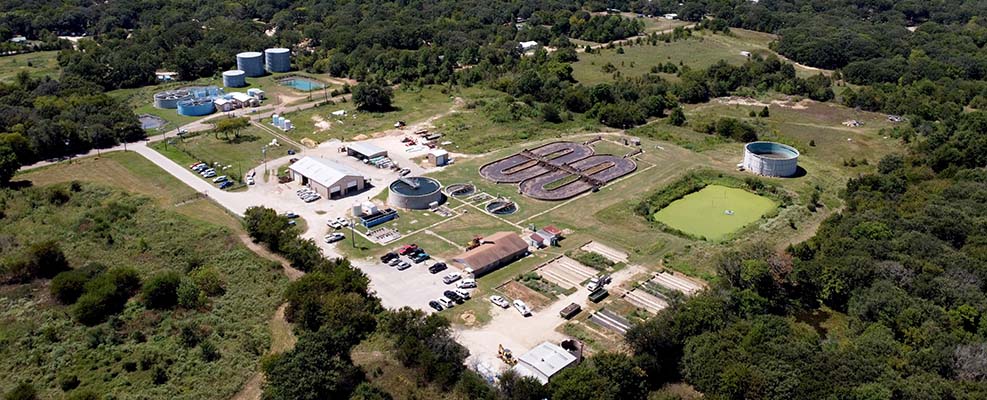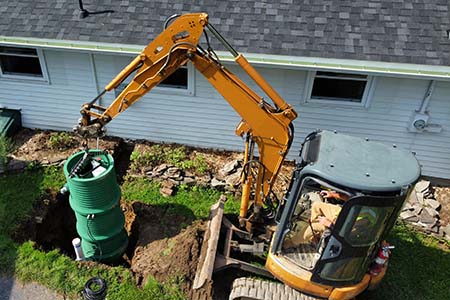
There is a question that communities of all ages often face: When a wastewater pumping system requires constant repair or is showing its age, is it better to repair it or replace it? Often there are many factors to consider, including weighing the needs of the users, the life span of the infrastructure and the viability of the existing sewage or septic systems. Can a repair help the system continue to meet the growing demands of businesses and residents and truly solve the underlying problem? What environmental factors make replacing all or part of the system a better choice? Finally, how does the bottom line factor in? A major capital expenditure may be in order and that requires time, planning and resources to make happen.
Timelier Than Ever
Communities across the country are growing and expanding. After housing starts across the United States hit an all-time low in 20091, they have since more than tripled. This explosion has resulted in community resources that are often stretched beyond their limits. According to the American Society of Civil Engineers (ASCE) 2021 Infrastructure Report Card, the nation’s more than 16,000 wastewater treatment plants are functioning, on average, at 81% of their design capacities, while 15% have reached or exceeded it. Most of the nation’s wastewater treatment plants are designed with an average life span of 40 to 50 years, so the systems that were constructed in the 1970s, around the passing of the Clean Water Act in 1972, are reaching the end of their service lives. Approximately 20% of Americans rely on septic tanks and they face similar issues. These systems—often used in rural and recreational areas near freshwater resources—have a similar 40-year life span.
Industry professionals have been working on multimillion-dollar projects to improve systems, eliminate sanitary sewer overflows and other crises. Yet, these projects have mostly maintained the status quo: In 2017, the ASCE gave the country’s wastewater infrastructure a D+ rating. In 2021, that grade remained the same. Pushing past the status quo and objectively evaluating existing systems can help the industry prepare for the future. There are a few factors to consider.
Current Service Costs
When considering service costs, it is important to factor in time, material, labor and downtime. When it comes to labor considerations, think about how a repair person’s time could be better spent. If they are always busy repairing outdated equipment, what routine maintenance is failing to get done? When it comes to downtime, consider the hard and soft costs. The inconvenience and disruptions to homeowners and local businesses can create public relations scenarios that escalate. Water and wastewater departments are in the business of trust and reliability—and when failures occur, both are at risk.
The East Cedar Creek Fresh Water Supply District (ECCFWSD), located about 50 miles southeast of Dallas, recently struggled with mounting service issues and had to re-evaluate its current system. The community serves about 6,500 water customers and 5,000 sewer customers adjacent to the banks of a 1,000-square-mile reservoir. Constructed mostly in the 1960s and ’70s, the equipment had been upgraded over the years yet the number of nuisance calls related to pump issues continued to increase. The current pumps would get bound or burnt up, breakers were tripping for no clear reason, and service issues were becoming the norm. In fact, in one weekend alone, ECCFWSD recorded 28 hours of overtime on repair work. Time was adding up and so were the costs associated with repairing pumps that were not grinding efficiently enough. In addition, the community’s 80 lift stations required continual maintenance.
The district knew that replacing 5,000 pumps plus lift stations would be cost-prohibitive initially. However, continuously repairing failing systems was not sustainable in terms of service repair hours.
After evaluating the capabilities of new automatic and manual 208 to 230 volt/single-phase grinder pumps, ECCFWSD recognized how the updated equipment could provide several advantages. The units could easily handle the demands of grinding domestic sewage, and the cutter system was designed to not bind up even if a pump stopped running at the end or in the middle of a grinding cycle. The heavy-duty shaft would also help prevent the pump from binding up at the start/end of a run cycle.
ECCFWSD specified the pumps immediately for known problem areas: about 150 pumps in the first year. It also began answering service calls with a new protocol: If a pump could not be repaired on the first attempt, it was sent to the district’s pump graveyard and a new pump was installed in its place. Since April 2018, nearly 700 new grinders have been installed at individual residences with minimal service calls or required maintenance. In addition, the district has placed new pumps in 15 lift stations. The plan is to replace all of the pumps in the future.
Not only is this a good example of service costs being an important metric to factor into the repair versus replace argument, but it also highlights that replacing a system does not have to be “all or nothing.” A staggered approach, with the right plan in place, can be a realistic solution.
Lifetime Cost of a New System
If the status quo has taught the industry anything, it is that no system will last forever. In addition to the initial acquisition cost to purchase and install a new system, operators should consider the lifetime ownership costs of what they have versus what is possible. In some cases, the lifetime costs of service and maintenance may negate any savings on a seemingly “low cost” system.
For example, when it comes to the big picture of an entire wastewater management system, the underlying technology of collecting and transferring water has not changed dramatically over the years. What has evolved are many of the pieces and components. Today’s high-performance pumps are built with installation and service in mind.
For example:
- Sewer systems that are designed with preformed inlets and outlets in the basin help to accelerate installation time and keep the tank cleaner over the unit’s service life.
- Floats that connect and disconnect more easily allow for streamlined service and replacement.
- Pumps with individualized parts that can be replaced when worn versus replacing the entire unit deliver a more serviceable system over the years.
- When units like these are specified for a project, the total cost of ownership (TCO) can often be less than others that offer a lower upfront cost.

When a municipal sewer authority located near a recreational lakeside community decided to replace its wastewater system, it evaluated what it had and realized a different solution was needed. For this established community, a gravity-fed system simply was not feasible anymore and would create a high risk for inflow and infiltration issues. The soil of the property lots was no longer compatible with the septic systems, which increased the risk of groundwater contamination in the community. Instead, the community opted to use a low-pressure sewage collection system to accommodate the residents’ changing wastewater needs.
However, with 8.5 linear miles of total pipe needed and the longest segment running over 4 miles, friction losses were a concern. Adding to the challenge was the overall ability to design the best system for the area. After performing a hydraulic analysis of the area using a low-pressure system, the authority felt confident the solution would deliver for the community given the challenging location and topography. As an added benefit, the combination of the 180-degree accessible drop inlet design with the flexible discharge pipe and directional boring simplified installation and eliminated the need to dig up roads.
Environmental Factors
Both of the aforementioned examples shared a common element: proximity to freshwater sources. Whether for drinking water, recreation or both, protecting environmental resources remains critical for communities and wastewater professionals. Inflow and infiltration (I&I) are often a top consideration when facing end-of-life concerns of an existing system. Testing waters for high levels of contamination can indicate whether an issue is present or imminent and alert a need for change. For areas near water sources, a large amount of I&I can occur during heavy rains and overload a treatment plant. For the municipal sewer authority mentioned above, residents were already mindful of the need to “save the lake.” This made the capital expenditure and personal costs of residential replacements more palatable. For ECCFWSD, the nearby reservoir was also a top consideration and concern.
These examples also prove another point: no two situations are created equal. The needs of homeowners and businesses, the age and life cycle of the existing system, the maintenance and service costs, and the topography of the area are just a few of the considerations at play. In the repair versus replace debate, the best solution is one that is built to deliver against specific needs and designed to perform for decades to come.
References
U.S. Census Bureau and U.S. Department of Housing and Urban Development, New Privately-Owned Housing Units Started: Total Units [HOUST], retrieved from FRED, Federal Reserve Bank of St. Louis; fred.stlouisfed.org/series/HOUST, Nov. 14, 2021.

